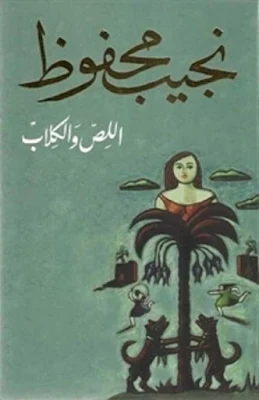Political and Social Dimensions in “The Thief and the Dogs”
Political and Social Dimensions in “The Thief and the Dogs”As I said before, some readers put this novel in the context of the Egyptian political and social developments which followed the 1952 revolution.
This argument helps both the reader and the translator to understand the implied and unspoken language of the text. In addition, we should consider the public fears of the ruling fascists which promoted the writer’s politeness and some linguistic tricks.
Muhammad Amin
Mahmoud Sulayman’s Analysis
Mahfouz had begun to put out antenna which
received the signals of a profound change in the Egyptian society. The readers
of the novel may recall the story of a clever thief called Muhammad Amin
Mahmoud Sulayman, known in the state press as “al-Saffah” (the killer) – and
who attacked houses and villas of the wealthy people and gave the poor some of
the stolen money.
This happened one day in April 1960, when
people loved that thief who humbled the police and awoke the dreams of
downtrodden people in Egypt. So, Sa’eed Mahran is the voice that declared the
people’s separation from the state, there is no more harmony and agreement. “If
someone kills me, this means they kill millions, because I am the hope and the
dreams of the crowds. I am the real man and the tears that shame everyman’, he
says. Sa’eed does not learn that the state widened its bureaucratic and social
gaps and foundations to meet its ambitious expectations. Sa’eed Mahran raised
his voice and the society attention to the cracks in the structure’s
foundations.[i] (Mohamed
Berrada, (2009), Translated by Christina Phillips, pp. 116-117)
The shortcomings of
the 1952 revolution
Rasheed
El-Enany (2004-102) says that Najeeb Mahfouz’s “The
Thief and the Dogs” is the author’s first link in the chain which dealt with
the shortcomings of the 1952 revolution. The betrayal of the revolutionary
ideals is one of the main themes of the novel. This idea is embodied by Mahfouz
in the relationship between Said Mahran, the protagonist of the novel, who
suffers from his old friends’ betrayal, and Ra’ouf Olwan, his fallen idol.
Indeed, Mahfouz
wanted to say that the newly emerged establishment betrayed innocent people and
inherited all too soon privileges of the former regime. However, this is not a
simple political novel, but Mahfouz succeeds in transforming the predicament of
Said Mahran into a consideration of issues such as the value of human action
and the alienation of the individual from both the modern society and God. The thief and the Dogs appeared to mark a different direction in
Mahfouz’s post revolution aesthetics.
The real basis of the novel
The novel was based on some real incidents and accidents that
gained a special public interest and occupied the Egyptian people’s minds. Said
was released to find a world turned upside down. Ra’ouf Olwan, Said’s former
planner, has become the Editor-in-Chief of a major state-run newspaper. His
friend took his wife, daughter and money. Nothing was left to Said but rage and
fierce desire for revenge. He tried to kill his enemies and transformed once
more into an outlaw after two failed attempts where he killed the wrong man.
Said fled to a safer place where he lived with a prostitute called Nur. Said
recalled his childhood when he was an orphan, and tried to get the advice he
needs from “Ali al-Jynaydi”, a sufi shaykh. However, Said became indoctrinated
into a life of crime.”[ii] (Nathaniel Greenberg, (2014), p. 40)
A shelter in love and faith circles
In "Najeeb
Mahfouz: From Regional Fame to Global Recognition",
the editors analysed this novel saying that Sa’eed Mahran was suffering a
double betrayal on his release from the prison: his wife left him, and his old
friend Ra’ouf Olwan, a journalist, abandoned his former stance regarding
society and the rights of the downtrodden poor. Mahran wanted to avenge himself
and planned to get rid of his enemies. There was a prostitute who loves him.
She helped him and also gave him shelter.
In addition, Sa’eed was helped by a
holy man whom he knew since he was a boy. So, He was revolving in vain in love
and faith circles, when he tried to escape from this treacherous world. At the
end, he failed to find his girlfriend who gives him love and the holy man who
gives him advice, and he was left alone with the police dogs, which killed him
by their teeth.[iii] (Michael Beard and Adnan Haydar (1993), (p. 15)
[i] Mohamed Berrada, (2009), Like a Summer Never to be Repeated,
translated by Christina Phillips , The American University in Cairo Press, Cairo, New York.
[ii] Nathaniel Greenberg, (2014), The Aesthetic of Revolution in the Film
and Literature of Naguib Mahfouz (1952–1967), Lexington Books, Lanham, Boulder,
New York, London.
[iii]
Michael Beard and Adnan Haydar(1993), Naguib Mahfouz: From
Regional Fame to Global Recognition, Syarcuse University Press, Newyork.


